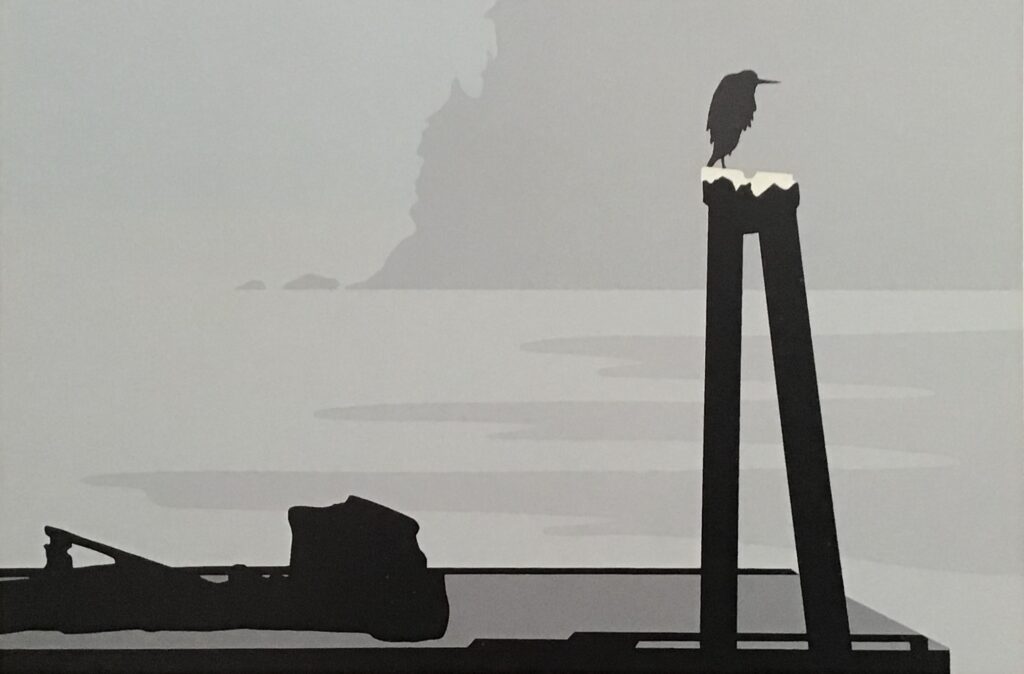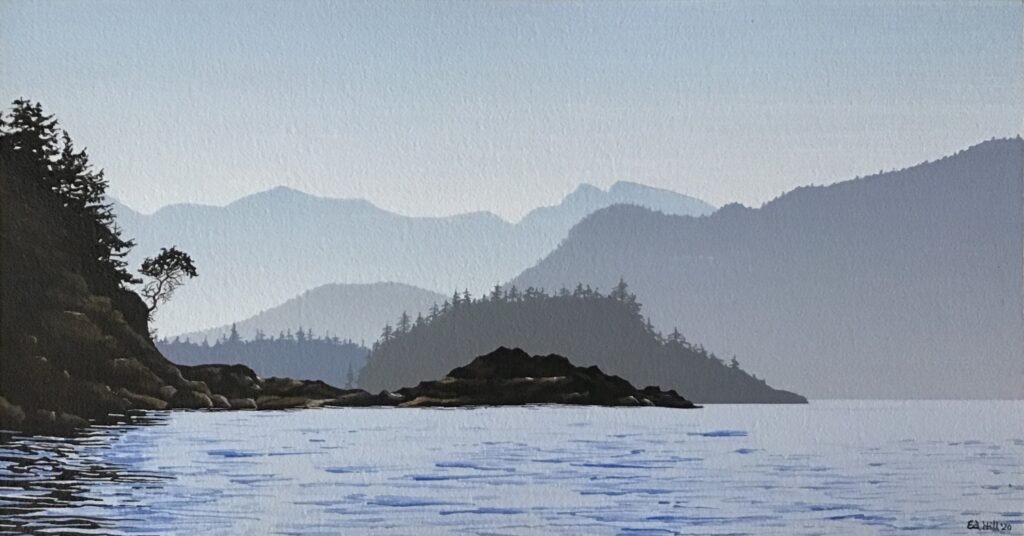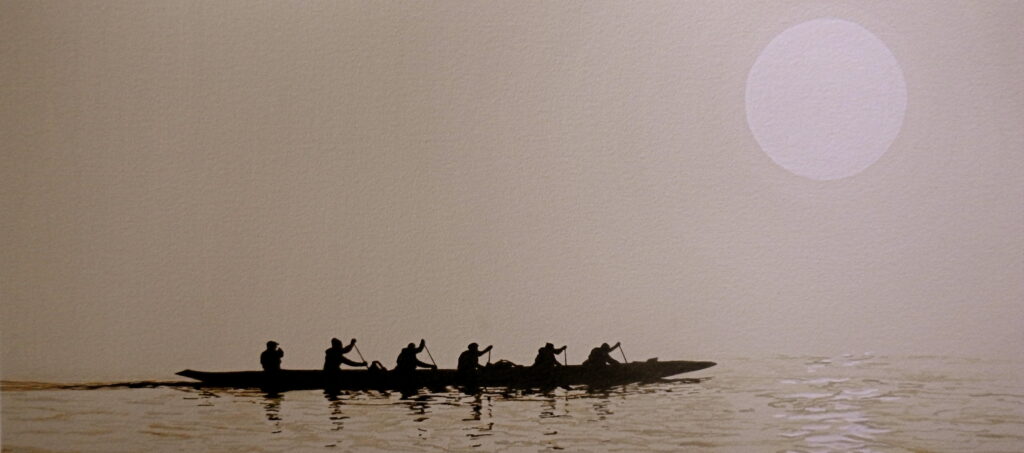Kill Zoners — It’s my pleasure and privilege to welcome a great guest to our blog. Ed Hill is a prominent Canadian painter and storyteller. He’s a prolific artist and writer who’s guided me as a life mentor and protected me as a police colleague to which I’m forever grateful. Please welcome Ed Hill to the Kill Zone.
— —
Garry Rodgers and I have been friends for well over 40 years. When he asked me to submit an article for The Kill Zone, I was well aware my thoughts would be read by any number of accomplished novelists. While I consider myself a writer, particularly within the realm of my discipline of being an artist, I could find writing in such company as this, a bit intimidating.
But I don’t. My writing is about emotion, spirit, energy, and a very direct link to my artistic creations in the form of paintings. As I finish a painting, my work is only truly completed when I “paint” the final bit with words.
You see I’m a painter first, and being a writer is but a part of my artistic expression. A bit of history will help explain. In the mid 1980’s, in the middle of a 34-year Royal Canadian Mounted Police (RCMP) career, my painting journey began. I was taught by an indigenous artist. And as such, much of what I learned was from the indigenous perspective.
It was from those origins that I found the value and reality of writing a story with each painting. A visit to my website www.edhillart.com will show that each image has a story, and that story is as much a part of my painted creation as the painting itself. In fact, whenever I sell a piece of my work, the story is always attached. I tell anyone who owns a piece of my work that unless they know the story of the image, they only have half of my artistic creation.
I suppose a bit of cultural history might be in order here. Within the indigenous culture virtually every painting, sculpture, totem pole, beadwork, or song has a story. Just ask. Within the very natural surroundings that we all live in, the indigenous culture has a story. And so, from the origins of my painting career my indigenous teacher, Roy Henry Vickers, taught by example. Every painting he does is accompanied by a written story.
When I started painting in 1985, I wrote a story with the very first image I created. You’ll find the image of my first painting at my website under the title of “Old Man”. And ever since, every painting I’ve done has a story. Some are emotional. Some are poetic. Some are a protest. And some can even evoke a spiritual connection for the reader.
The painting and the very act of creating it dictate what the story will be. Indeed, over the years I’ve written so many stories that they could be compiled and published as book themselves. Some people in fact have told me that they have used my website as a “book” while they’ve taken the time to view the paintings and read the hundreds of stories attached.
As I have taught my painting techniques to many artists over the years, I’ve always touted the value of composing a story to be a part of their painting I’d be generous in saying that perhaps 5% of my students practice that teaching. So many find it hard to express their thoughts and emotions.
As any of you reading this article know, it takes discipline to sit down and write. Not everybody has the commitment, energy, creativity or that unique and special discipline to be a writer. As the old saying goes, “If it was easy, everybody would be doing it.”
As writers, I know you write from experience, but you also create from emotion, from a place of energy and creativity. You write from an inner need to get it out there. When that writer within has a story to tell, your inner muse is always calling to you. And so it is with me as an artist.
When I have a painting in progress, I often tell my wife as we are away from my painting, that I can “hear it calling to me”. And therein lies the story. You see, for me, the story develops and reveals itself as I paint. Seldom do I paint an image with the title and story realized ahead of time. In the many hours of painting, lost in the Zen of creativity, I let my brain wander. I may be painting an image I’ve seen for decades, yet now I have chosen to paint it.
Why?
Why now?
That’s when the story begins to whisper. And as I paint and compose the image, so too the words of my story flood my brain. Hard to explain, the story comes in an inspirational, creative, and even a “spiritual” surge from within. I’m not overstating that. The story comes from the very spot within me that the painting comes from. It’s a part of my artistic creation. When composing my story, as I write, I paint with a palette of words.
Sometimes the title is evident almost immediately. Other times, only as the paint dries and the words of my story turn into sentences does the title take shape. And when it does, the title in particular is compelling. It must be.
Titles such as “Get Over It”, or “Covid Blue” are good examples of that. To understand those titles, you have to read the story. And when you read the story, you’ll then refer back to the painting. The energy of that loop is complete.
The image is the very first contact anyone usually has with my creative expression, but the title is what turns their gaze to the story. And I’ve watched from afar at shows where someone will study my painting, turn to the story, then back to the image with their eyes opened to the very intention and spirit of the painting. And speaking commercially, quite often it’s the story that connects the viewer to the image, and that results in a sale.
Often, I can sit in my home with a coffee and just revisit the many paintings I have hanging on my walls. I’m always taken back as to the “why” of a particular painting. I marvel at the very creation, and many times realize I could never do that painting as well were I to try it again. That painting was a product of a moment in time, a moment charged with circumstance, serendipity, and emotion.
I “use” my paintings a lot for that purpose. I find a soothing comfort in just revisiting them and savouring the colour, composition, light and dark, and very presence of the image itself. But so too, I will read the story attached just as often. Those words painted into the composition of the story have an everlasting energy. It’s an energy that never grows old.
My family have instructions. When and if my time comes to be in a bed someday as I approach the end of my life’s journey, they’re to read to me. They’re to read those stories of emotion, spirituality, and creativity. For those are the touchstones of my life.
I know those words, even if my eyes are closed to the paintings themselves. I know too that those words will resonate with a positive energy that’ll have some meaning and comfort to me. When the lights do inevitably go out, it’s those words that I want to take with me.
I close these thoughts by referring the reader to one of my paintings titled “Forever”. I think the story of “Forever” applies to my written words. And so too to yours. Created with our energy and inspiration—as writers—our words will long outlive all of us. They are FOREVER.
— —
Bio — Born in Paris, Ontario in 1948 and later moving to Peterborough, Ed Hill’s journey to becoming a distinguished artist began in earnest after a career in the Royal Canadian Mounted Police, which he joined at age 20. His artistic ambitions, which had been a mere dream since his high school days, began to crystallize in the mid-1980s after moving to Tofino, British Columbia, and meeting the renowned artist Roy Henry Vickers.
Under Vickers’ mentorship, Hill honed his skills and developed a distinctive style, producing his first notable work, “Old Man.” His art, deeply inspired by the landscapes of British Columbia, seeks to evoke the profound emotions tied to the region’s natural beauty.
Now retired and living in Gibsons, British Columbia, with his wife Joy, Hill continues to explore and depict the “West Coast” essence, aiming to capture the moments where nature and the observer’s inner world harmoniously align, hoping his viewers anywhere can feel the unique “music” of British Columbia’s landscapes through his work. Visit www.edhillart.com.
— —
Kill Zoners — Painting with words. How does this resonate with you? Do you “see” your writing as it’s imagined and unfolds? Could you captivate your story in one image as Ed does with his? Let’s discuss, and please share how you paint with words.





